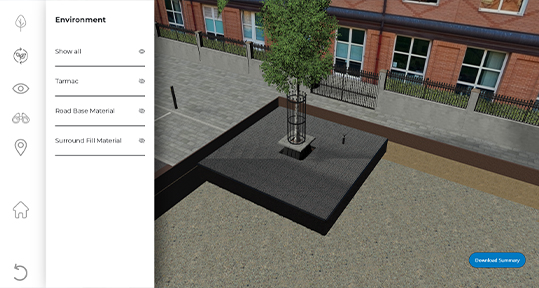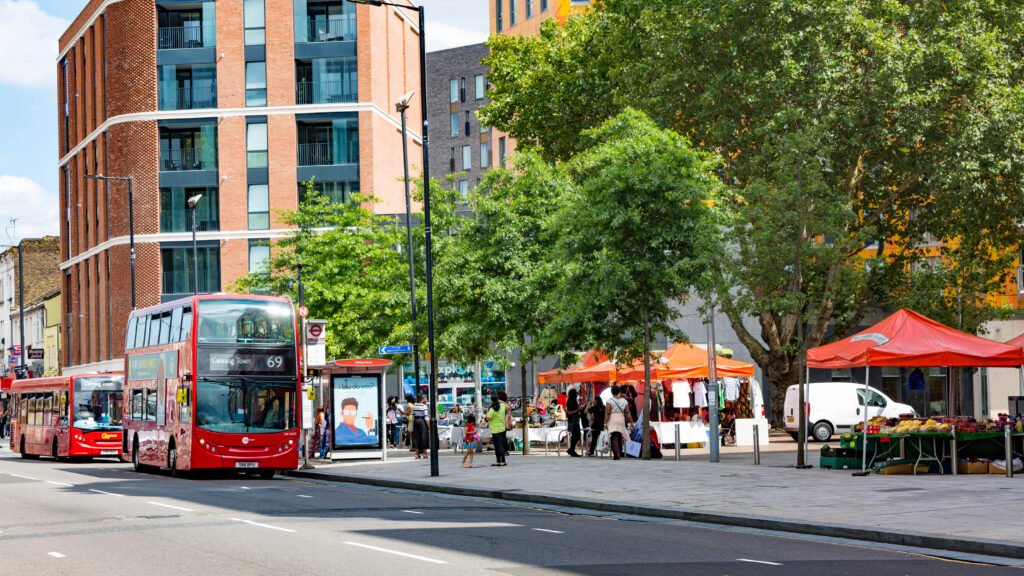The ancient UNESCO Listed World Heritage Site city of Bath has long been associated with the Romans, and in fact, is named after the spas and baths that they built. Surrounded by hills, the area has long been inhabited, and hot springs were known about long before the Romans arrived.
The ancient UNESCO Listed World Heritage Site city of Bath has long been associated with the Romans, and in fact, is named after the spas and baths that they built. Surrounded by hills, the area has long been inhabited, and hot springs were known about long before the Romans arrived. Some of these hills are formed of fine limestone, known as Bath Stone, which weathers to a rich honey colour and has been used across the UK although mostly in the South West.
One of the mines was under a small hamlet on the south side of the city called Coombe Down, and stone from this quarry was used to build a fine house nearby called Prior Park – built-in part to showcase the qualities of the stone as an alternative to the limited supply of Portland Stone, which was under Crown control. The stone was widely used to build much of the Georgian parts of the city, and repairs following the devastating bombing in April 1942.
Project
Location
Contractor
Landscape Architect
The ancient UNESCO Listed World Heritage Site city of Bath has long been associated with the Romans, and in fact, is named after the spas and baths that they built. Surrounded by hills, the area has long been inhabited, and hot springs were known about long before the Romans arrived.
The ancient UNESCO Listed World Heritage Site city of Bath has long been associated with the Romans, and in fact, is named after the spas and baths that they built. Surrounded by hills, the area has long been inhabited, and hot springs were known about long before the Romans arrived. Some of these hills are formed of fine limestone, known as Bath Stone, which weathers to a rich honey colour and has been used across the UK although mostly in the South West.
One of the mines was under a small hamlet on the south side of the city called Coombe Down, and stone from this quarry was used to build a fine house nearby called Prior Park – built-in part to showcase the qualities of the stone as an alternative to the limited supply of Portland Stone, which was under Crown control. The stone was widely used to build much of the Georgian parts of the city, and repairs following the devastating bombing in April 1942.
Project
Location
Contractor
Landscape Architect
Project
Location
Contractor
Landscape Architect
Coombe Down continued to grow through the 19th and early 20th century, and in 1935 the Ministry of Defence purchased a 46-acre farm and set up barracks and offices on the site. After the Second World War, a new housing estate of about 900 homes, known as Foxhill, was built, providing needed housing for residents of the city.
When the Ministry of Defence decided to dispose of the Foxhill barracks and office site, Curo housing association, which manages the adjacent housing estate, purchased the whole 19-hectare site and, working with HTA Design got planning permission for 700 new homes, a new primary school, shops, facilities and a community centre. Central to the design is the tree-lined central avenue leading into the development giving a spacious feel – even though the density of development is higher than many similar developments. Architecturally classical in design, with Bath Stone features, the wide range of different properties offers choices for all types of household, creating a mixed and balanced community with fantastic tree planting.
Coombe Down continued to grow through the 19th and early 20th century, and in 1935 the Ministry of Defence purchased a 46-acre farm and set up barracks and offices on the site. After the Second World War, a new housing estate of about 900 homes, known as Foxhill, was built, providing needed housing for residents of the city.
When the Ministry of Defence decided to dispose of the Foxhill barracks and office site, Curo housing association, which manages the adjacent housing estate, purchased the whole 19-hectare site and, working with HTA Design got planning permission for 700 new homes, a new primary school, shops, facilities and a community centre. Central to the design is the tree-lined central avenue leading into the development giving a spacious feel – even though the density of development is higher than many similar developments. Architecturally classical in design, with Bath Stone features, the wide range of different properties offers choices for all types of household, creating a mixed and balanced community with fantastic tree planting.
Early in the design process, GreenBlue Urban was contacted to work with HTA Design to make sure that the trees had the best opportunity to achieve species potential – and for the long term. The GreenBlue Urban ArborSystem was specified, phase 2 installed by Idverde for the 13 trees including the StrataCell soil cell system, ReRoot root management products, ArborVent aeration inlets and RootRain irrigation systems all below ground. At ground level, the rootball, soil and root systems were protected by the GreenBlue Urban Ductile Steel “Tay” tree grille which incorporates the irrigation inlet, giving the tree the protection from soil compaction yet allowing gaseous exchange.
As Curo has rolled out the different phases, GreenBlue Urban have been glad to work with them across the whole development which has resulted in fine tree canopy cover for all those who live, work and play across this lovely new addition to the Coombe Down village!
Early in the design process, GreenBlue Urban was contacted to work with HTA Design to make sure that the trees had the best opportunity to achieve species potential – and for the long term. The GreenBlue Urban ArborSystem was specified, phase 2 installed by Idverde for the 13 trees including the StrataCell soil cell system, ReRoot root management products, ArborVent aeration inlets and RootRain irrigation systems all below ground. At ground level, the rootball, soil and root systems were protected by the GreenBlue Urban Ductile Steel “Tay” tree grille which incorporates the irrigation inlet, giving the tree the protection from soil compaction yet allowing gaseous exchange.
As Curo has rolled out the different phases, GreenBlue Urban have been glad to work with them across the whole development which has resulted in fine tree canopy cover for all those who live, work and play across this lovely new addition to the Coombe Down village!






